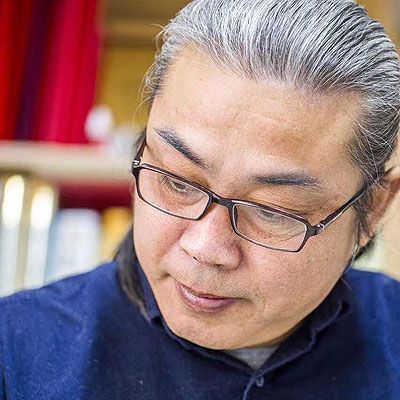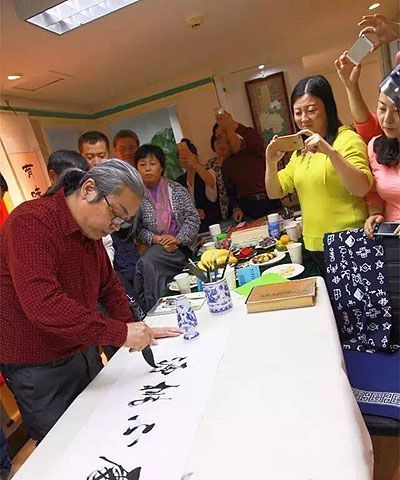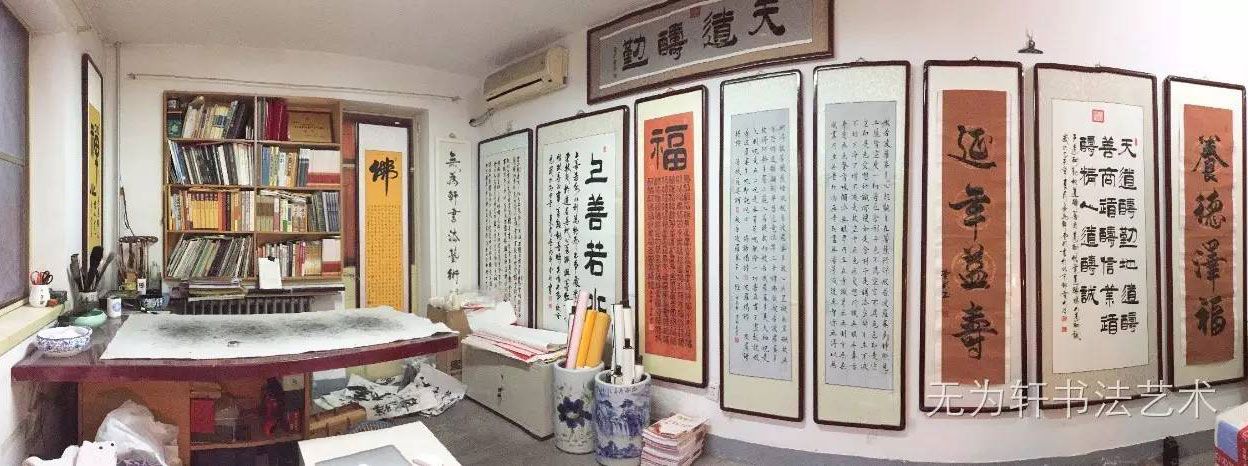
58¾"
19¾"

Approximate Measurements
Artwork Panel: 32.1cm x 93.2cm ≈ 12½" x 36¾"
Silk/Brocade: 41cm x 149cm ≈ 16" x 58¾"
Width at Wooden Knobs: 50cm ≈ 19¾"

Close up view of the artwork mounted to this silk brocade wall scroll




This Japanese proverb relays the vicissitudes of life. Some would more naturally translate it into English as "Always rising after a fall or repeated failures".
The first Kanji is literally "7". The second means "fall down" (sometimes this Kanji means "turn around", "revolve" or "turn over", but in this case, it holds the meaning of "fall"). The third is "8". And the last is "get up", "rouse", or "rise".
Basically, if you fail 7 times, you should recover from those events and be prepared to rise an 8th time. This is also applies if it is the world or circumstances that knock you down seven times...
...just remember that you have the ability to bounce back from any kind of adversity.

I met Cao Bin years ago, and long before his fame. At that time, his wife was running a small house cleaning business. One day she was tidying up my mother-in-law's home in Beijing and overheard that I am in the business of selling Chinese calligraphy and artwork. She asked if I'd like to meet her husband who was a pretty good calligrapher as she described him with modesty.
The next evening, I visited his modest studio and saw some really nice calligraphy and great black ink bamboo paintings that he'd just finished. After a lot of tea drinking and chatting, I asked if I could commission a few pieces.
Through the years, I would occasionally buy a few more pieces, not realizing how famous he had become. I might pop by his studio, only to hear from his wife that he was down in Anhui receiving an award for his calligraphy (calligraphy competitions are comparable to the fervor that sports championships have in the rest of the world). It finally dawned on me that this man I had known for about 7 years was a premier calligrapher for whom books had been published featuring his work, and the recipient of numerous awards.
The best part is that I have guanxi (a word that kind of means "special relationship" in Chinese), he gives me better prices than anyone else. This really fits well with my philosophy to offer high quality Asian artwork that everyone can afford.

When I first met him, Cao Bin had a shaved head like a Buddhist monk. Years later, he has traded in that look for the ponytail that is expected of the eccentric Chinese artist

A frenzy of people watch Cao Bin create his calligraphy during a special event

Cao Bin at his studio

Full view of Cao Bin's calligraphy studio
This is painted on xuan paper (often incorrectly called "rice paper"). The raw artwork was then taken to my workshop in east Beijing where the master mounter built it into a handmade wall scroll.